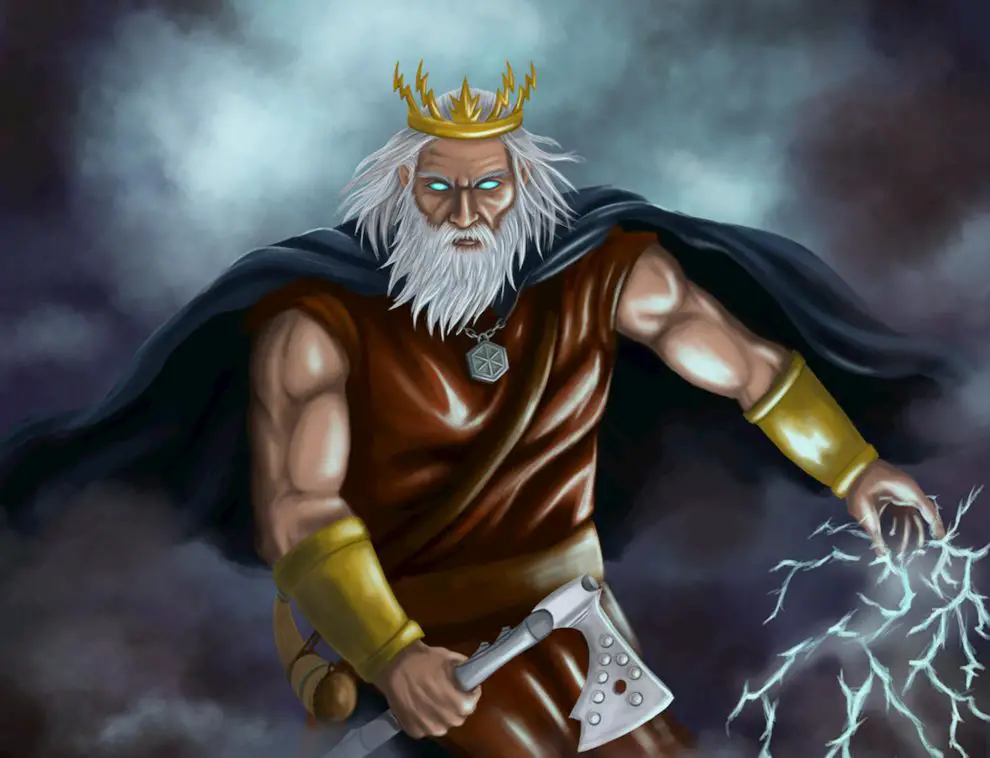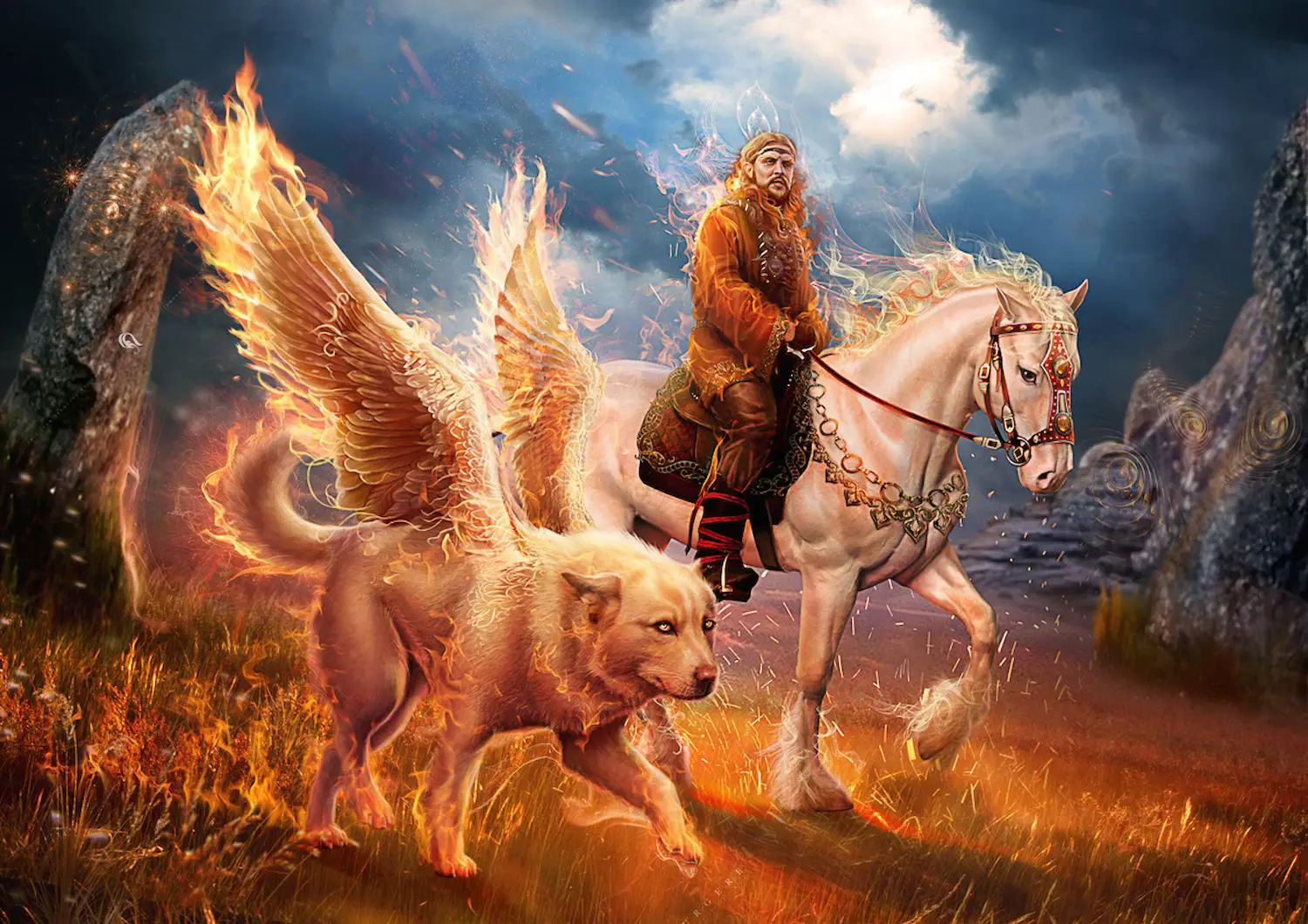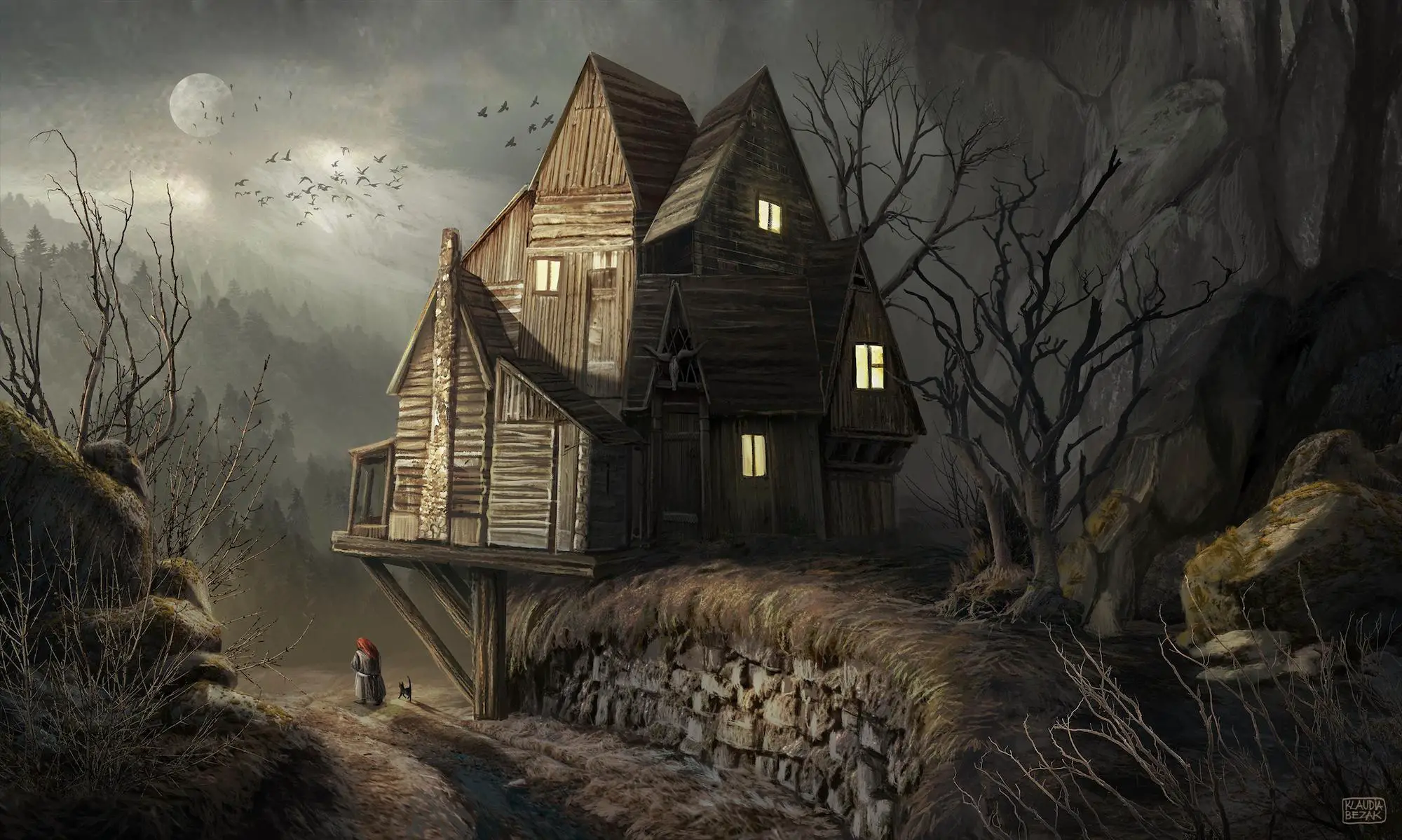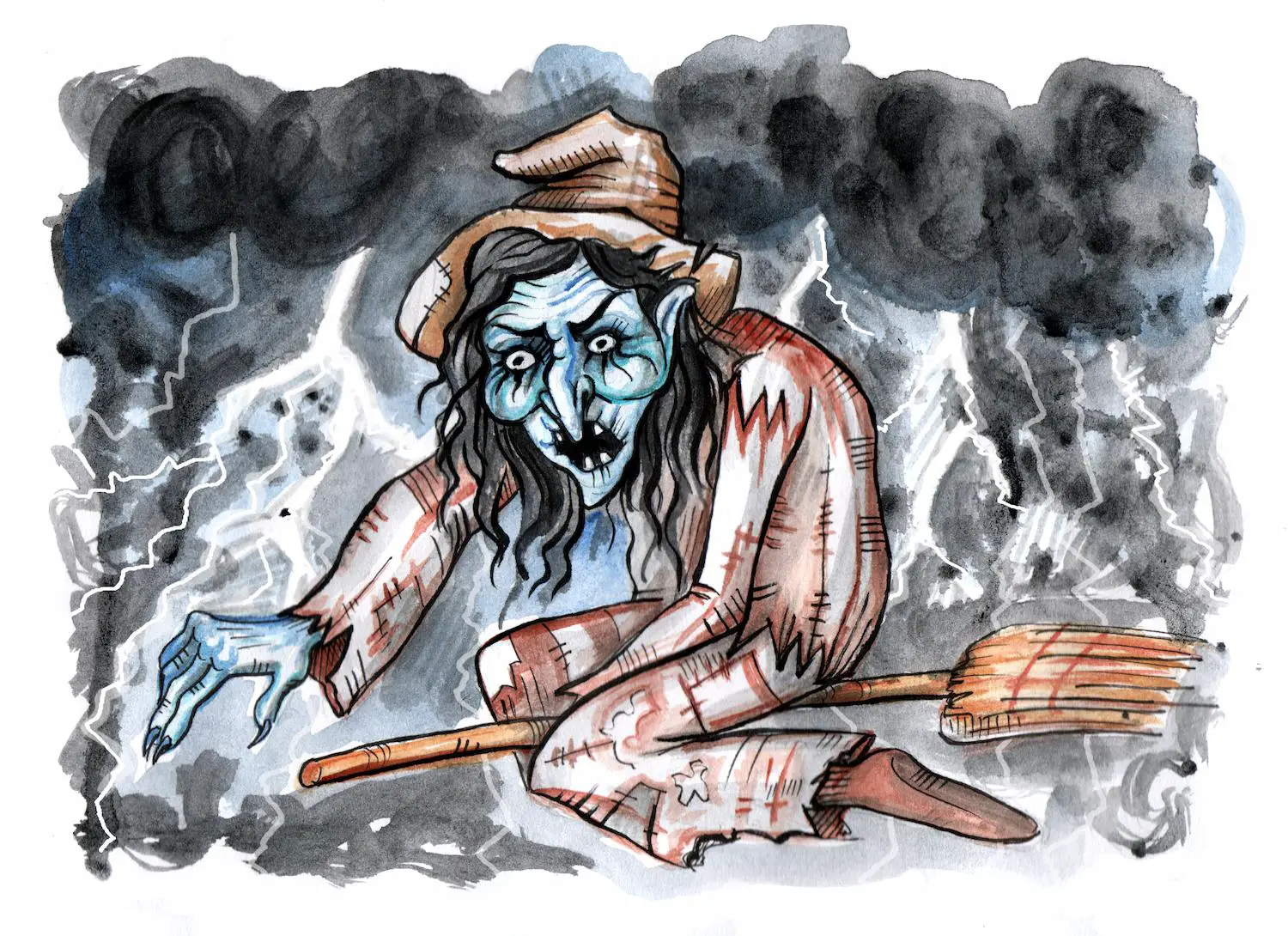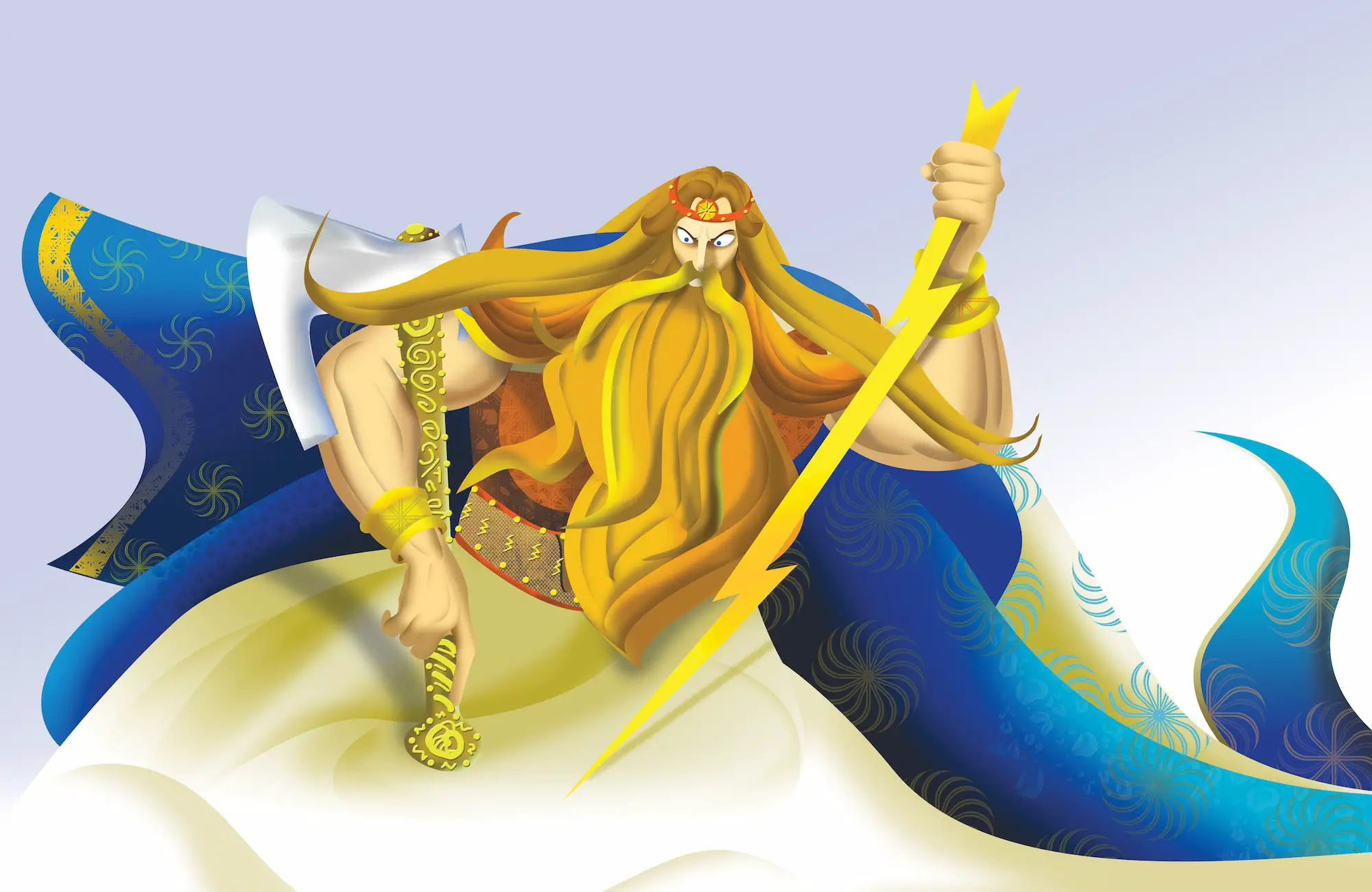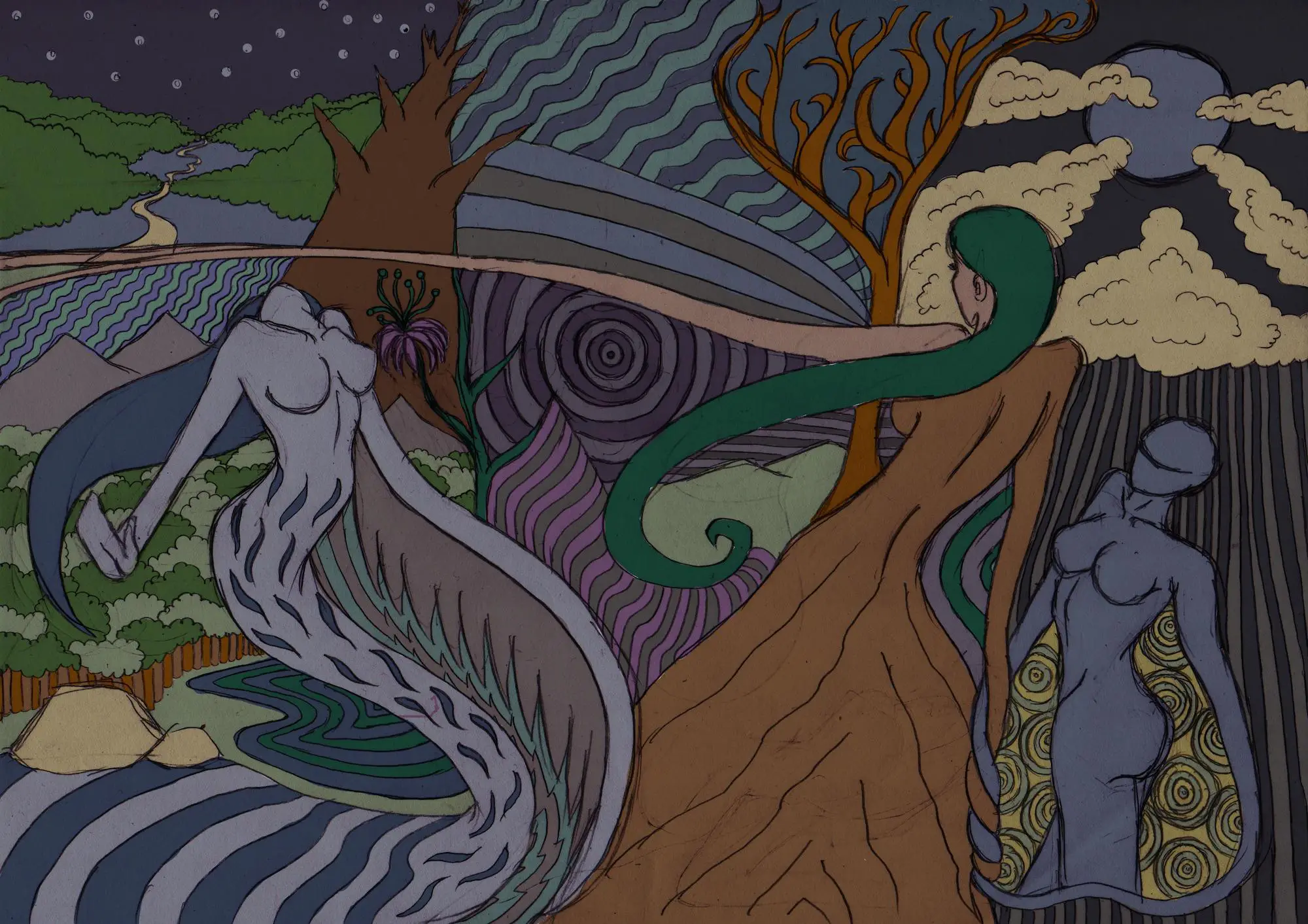The evolution of Slavic mythology and religion began around 3, 000 years ago, reportedly sometime during the Neolithic or the Mesolithic period.
In Slavic mythology, God ordered the Devil to take a handful of sand from the sea bottom and create the world out of it (It’s the Devils fault when you get sand stuck in your shoes. Now it all makes sense.).
The Slavic religion is based on dualistic principles. There is a Black God who is mentioned in curses and a White God to whom people send their pleas for protection, mercy and welfare.
The Slavic religion has a number of common traits with other religions that descended from the Proto- Indo- European religions.
The religion of the Slavic people is polytheistic, and Slavic mythology is just one aspect of it.
Prefer video? Watch this short summary about Perun.
The Slavic religion refers to the pre-Christian religious practices among Slavs on the territory of Eastern Europe.
Unfortunately, there are only fragments of information about the legends and myths of pagan Slavs which makes it very hard to trace the history of their religion and to reconstruct the Slavic pantheon.
Many of the beliefs and deities of the ancient Slavs are focused on the interpretation that the world is inhabited and directed by mysterious forces and gods.
In the later stages of communal development, in the areas where the Slavic tribes started living an organized cultural life (and met foreigners), the spirituality slowly abandoned its primitive form and anthropomorphized the natural spirits into divinities and deities with supernatural powers.
One such deity was Perun, who was considered to be the supreme god (the god of thunder and lightning).
He was the owner of the sky and a patron saint of the army.
Table of Contents
The Myth of God Perun
First time Perun was mentioned (in writing), was in the 6th century, in the chronicles written by a Roman historian, Procopius. His alternate name was Bog (which is now a Slavic word for God).
The primary sources that mentioned his existence were Nestor’s chronicles, the mid-6th century chronicles of Procopius and the 10th-century Varangian treaties.
When it comes to the historical development of Slavic mythology, folklorists believe that Perun superseded the god of the sun Svarog (who was the supreme god before Perun).
As a liberator and a deity with traits of a warrior, Perun was presented as a pagan warrior of heaven and protector of warriors.
He was also praised as the god of agriculture, whit bulls being sacrificed in his honour.
In 988, when the leader of the Kievan Rus, Prince Vladimir I introduced Christianity into his lands, he pulled down the statue of Perun and threw it into the waters of the Dnieper River (modern-day Ukraine).
Many years later, people were throwing golden coins into the river in order to honour the Slavic god Perun.
Perun was represented as a man who was strong, healthy and full of energy.
His beard was red, his moustache was golden, and his hair was silver (So, he looked like an average hipster?).
He was armed with the axe of Perun, a hammer and often a bow (which he used to shoot the arrows of thunder and lightning).
He was often represented as an ox or as a mighty oak (sacral tree of Slavs).
Some illustrations depict him as an eagle sitting on the top of a tree, while his enemies, the god Veles and dragons are curled around the roots of the tree.
On other images, we see him as a brave warrior riding a chariot drawn by goats.
Perun is also associated with Thursday because of the word “Perendan” which was the Slavic word for Thursday. In the past, the day of celebration of Perendan or Perun’s day was on June 21 (the day of the summer solstice).
The Mythical Characteristics of Perun

The family of the god Perun was quite extensive (to say the least).
His wife was the Great Mother, goddess of the sun Mokosh. His mother was the goddess of love, joy and fertility called Lada.
His children were Marzanna, the goddess of winter and death- also known as Morana, the god Jarvlo, god of spring and agriculture and Dziewanna, the goddess of wilderness and hunting [1].
As the god of thunder, lightning and war, Perun used an axe as a weapon, a bow and a hammer.
He also used golden apples as lightning grenades.
Slavic people carried thunderstones (a type of axe) to protect themselves from diseases and misfortunes. Thunder marks were engraved on rooftops and entries of village houses, as a symbol of Perun.
Slavic people believed that anytime a storm would appear, it was actually the god’s anger towards the god Veles or his response to some injustice that had happened.
The Battle Between Perun and Veles
The myth about the battle between Perun and Veles tells the story of the god Veles (represented as a serpent) who strived to climb to the top of the World Tree and by doing so (striving, I mean) he caused a drought in the world of humans.
Perun was enraged by this, so he fought the serpent with an axe and killed him.
The drought was stopped and balance was restored.
Veles, of course, didn’t actually die during the battle. He rose up from the grave and challenged Perun to battle, once again. That’s why the Slaves believed that the cycle of battle (death and rebirth) happened every time before rainfall.
In the broader sense, the battle between Perun and Veles is considered as a battle between chaos and order – the main mysterious phenomena in every mythology and the greatest motivation to create stories and narratives (in folklore).
Ancient Sources
The ancient sources can be traced back to the middle of 500 CE, when the Byzantine scholar Procopius mentions Perun as the “maker of lightning” worshipped by the Slavs.
In these historical records, Perun is also referred to as the supreme god to whom cattle were sacrificed. In addition, Perun (as a deity) appears in old Rus treaties, dating back to 907 CE.
In the year 945, the Rus leader Prince Igor and the Byzantine emperor Constantine VII made a treaty in which the army of Igor is mentioned as a group of unbaptized men who laid down their weapons and took an oath at the statue of Perun.
Moreover, the Chronicle of Novgorod (compiled between 1016 and 1471) describes the attack on the shrine of Perun as an event that provoked a serious uprising.
The primary myth about Perun, however, tells the story of creation in which he takes a stand against the god Veles and enters into a battle with him. Veles is the god of the underworld who attacks the goddess Mokosh.
Perun defends Mokosh and the freedom of atmospheric water (rain in essence) and in doing so, he gains glory and control over the entire universe.
Perun After Christianization
The most obvious alteration of the myth of god Perun appeared after the Christianization of the Slavic people, in the 11th century.
The cult of Perun became associated with St. Elias (also known as Elijah or the Holy Prophet Ilie, Ilija Muromets, Ilia Gromovik) who is described as a fearless rider of the sky chariot [2].
When St. Elias wanted to punish his enemies, he used the power of lightning bolts. According to some theories, the myth of Perun was invented by the Vikings, although this theory has never been completely confirmed nor proved.
Reportedly, Prince Vladimir I, the tsar of Kievan Rus (ruled from 980 to 1015 CE) invented the Slavic pantheon by combining the tales of Greek and Norse mythologies.
This theory was initially exposed between the 1930s and 1940s through by the German anthropologists Erwin Wienecke and Leonhard Franz (they were a part of the German Kulturkries movement).
The opinion of these experts was quite imperialistic.
They believed that the Slavic people were not capable of inventing and developing a complex religious system beyond what was then known as animism and that they certainly couldn’t create one without the assistance of the “superior, master” race.
In fact, Vladimir I erected statues of the gods Perun, Dazhbog, Khors, Striborg, Mokosh and Simargl near the territory of today’s Kyiv.
Related posts
However, some historians claim that there is evidence that the statue of god Perun was there decades before.
This statue was made of wood. The head of the god was made of silver while the moustache was made of gold.
The book “Slavic Gods and Heroes” continues examining this riddle and argues that Perun was possibly invented in Kievan Rus’ between 911 and 944.
After Slavic people converted to Byzantine Greek Christianity, Vladimir I removed the statues and thus began the so-called modernization of Kievan Rus and the facilitation of trade between the two nations.
The Slavic god Perun and its historical origin will remain a mystery since there is only a small number of pre- Christian documents that talk about the details of Slavic cultures.
Finally, Perun is present in other mythologies as well through his deity equivalents.
The Lithuanians call him Perkunas, the Romans Jupiter, the Greeks Zeus, the Albanians the goddess Pirpiruna or the goddess Perperona (for the Romanians).
The Norse people know him as Thor/Donar. In Celtic mythology, he is called Taranis while the Hindi myths address him as Parjanya.
References
- https://mythology.wikia.org/wiki/Perun
- https://www.britannica.com/topic/Perun







